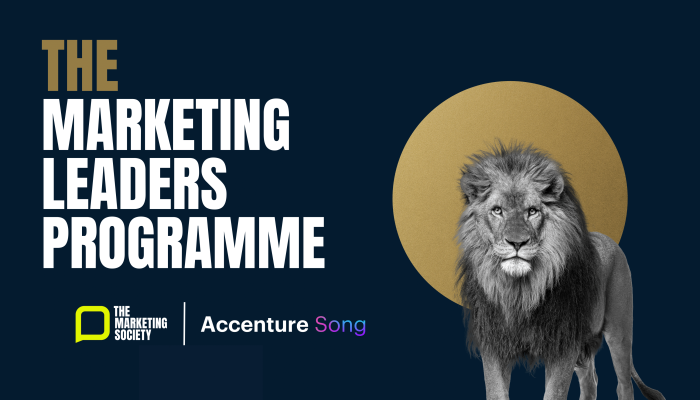“CES is getting larger and larger simply because computing technology is infusing into our lives more and more.”
Said Nvidia CEO Jensen Huang during a talk at CES 2018.
And the statement pretty much captures the essence of what the world’s biggest trade show has come to be.
The 51st CES in Las Vegas attracted some 170,000 attendees and over 3,900 exhibitors—although it will probably be best remembered for the major blackout that left the Las Vegas Convention Center in the dark for two hours and triggered hundreds of ironic tweets.

Nvidia CEO Jensen Huang gives the keynote at CES
Still, it would be unfair to overlook what happened on CES’s floor when the lights were still on.
“The technologies that will shape the future of our planet and lives for the better were on display across the show floor,” says Gary Shapiro, CEO of organiser Consumer Technology Association. “CES is the global platform where you can see the critical ingredient technologies and understand better how they interconnect, providing both a clear snapshot of today’s breakthrough innovations and a vision of the road ahead.”

CTA President and CEO Gary Shapiro gives his annual keynote at CES
In particular, 2018 was the year of voice-powered virtual assistants, with Amazon Alexa and Google Assistant popping up in the products of hundreds of partners as supported features.
CES also confirmed its reputation as one of the US’s largest auto shows. While CES originally stood for Consumer Electronics Show, cars are now a substantial fixture; and since self-driving technology is almost taken for granted, carmakers are vying to embed the next big thing in their vehicles—from talking dashboards to brain-to-vehicle interfaces to Internet of Things elements.
Beyond these macro areas, CES kept showing its potential for catering to specific demographics—including people with special needs, new mothers, and fitness lovers.
Voice
Alphabet voice-controlled Google Assistant won the battle for publicity this year, with an unmatched presence that included costumed staffers operating giant gumball machines to aggressive “Hey Google” branding virtually everywhere in Las Vegas. And Alphabet’s digital butler was on a par with its rival Amazon Alexa when it came to being present on devices.
Both voice-powered platforms have been included as add-on features on a host of appliances and gadgets—from rlyrbuds to vehicles to TVs. Companies seem to be jumping at the opportunity to plug their voice-controlled devices into Google’s and Amazon’s sprawling ecosystems, which allow several appliances to talk to each other.

LG Cloi
Even LG—whose effort to showcase its own voice platform ThinQ descended into farce thanks to a recalcitrant robot—announced that it will include Google Assistant in its TV sets. Similarly, Chinese multinational Hisense says it will integrate Alexa into its TVs. This opens the door not only to new ways of changing channel, but also to TVs rising to the status of smart homes’ video-supporting control centres. Just think of how an Alexa-supported TV could work in concert with equally Alexa-powered security cameras. (New York-based home camera maker Canary was also at CES, and just happened to present cameras with a new Alexa feature.)
Not every company is convinced that TVs—or Alexa or Google Assistant—would be the ideal smart home hub. Samsung is keen on fridges instead: its new Samsung Family Hub refrigerator is powered by voice assistant Bixby and can be used to control a number of home appliances. It even sports a screen so users can keep an eye on security cameras or baby monitors.
“We’ve been listening closely to current users and created a new Family Hub that’s even smarter and more advanced than before,” says Samsung’s senior vice president John Herrington. “The integration of Bixby and SmartThings into the Family Hub is bringing a new level of intelligent connectivity into the room where people spend the most time: the kitchen.”
Digital health
As was the case last year, CES 2018 was attentive to people with special needs. Technologies whose mainstream usage belongs to the realms of gaming or entertainment were reinvented as assistive devices.
ThirdEye
New Jersey-based startup ThirdEye, for instance, presented its X1 Smart Glasses, an augmented reality (AR) headset that aims to alleviate dementia-caused inability to recognise faces. The glasses are fitted with a neural network able to process several pictures of a patient’s loved ones, and then label those people every time they are in front of the glasses. “You train the glasses so that they’ll show your relatives’ names when you see them,” says founder and CEO Nick Cherukuri. “So, when you, a patient, look at your loved ones, a label will appear next to them, with their name and other key information.” The X1 Smart Glasses headset is slated to be shipped in March 2018.

Closeup of Xenoma's e-sin technology for apparel
Japanese company Xenoma also revealed a product for dementia patients in hospitals, where they are often confined to bed in order to avoid dangerous wanderings. To solve that, Xenoma created “smart pajamas” lined with sensors that can immediately detect when the wearer is moving, thus notifying healthcare professionals. The fabric can also monitor the patient’s breathing pattern. The garment will be tested in the field in a German hospital over the next few months.

Lizn wireless earphones
Another example included Danish company Lizn, which unveiled wireless earphones with hearing-aid functionalities such as directional amplification, noise filtering, and consonant enhancement. The earphones also offer music, Bluetooth connection and Google Assistant integration.
Auto 2.0
Self-driving cars are coming, but what will a driverless world look like? At CES 2018 the company that tackled that question head-on was Toyota. The carmaker’s showpiece was concept car e-Palette: prima facie a massive box on wheels, in fact a possible glimpse of the future of mobility. In Toyota’s grand plan this electric, fully autonomous vehicle could become a moving shop, a public transport solution, or even temporary accommodation.


Toyota e-Palette concept
Since it has no steering wheel or seats, and furniture can be easily rearranged, Toyota could rent the vehicles by the hour for any purpose. (The company has already established partnerships with Pizza Hut, Uber, Mazda, Amazon and Didi.) The fleet would be powered by Toyota’s Mobility Services Platform, software suite, explains company chairman Akio Toyoda. “Toyota remains committed to making ever better cars. Just as important, we are developing mobility solutions to help everyone enjoy their lives, and we are doing our part to create an ever better society for the next 100 years and beyond,” he says.
Fellow Japanese carmaker Nissan also got its share of hype, demoing a brain-to-vehicle interface to make manned cars safer and driverless cars less scary. The device—a helmet that measures brain activity—would be able to predict drivers’ decisions before they take place, and react when necessary (for example, turning the wheel or braking.)

Nissan Brain-to-Vehicle Technology
Keeping tabs on brain activity might also be a way to reduce passenger discomfort as they travel in an autonomous vehicle—for instance, adapting the car’s actions to passengers’ preferences. “There are a lot of situations where a vehicle’s default action when driving autonomously would not be what the driver would actually want to do if they were in control,” says Nissan spokesman Nicholas Maxfield. “Reading brainwaves is one way to shrink that gap between vehicle action and driver expectation.”
Hyundai was another major carmaker at CES: it teamed up with Silicon Valley audio-recognition company SoundHound to create a voice-controlled vehicle infotainment system.

Harman's MoodRoof 2
Samsung-owned auto electronics supplier Harman revealed the MoodRoof, a car roof display for delivering in-car audio and visual content.
Virtual reality
CES 2018 was by many accounts the year of voice and digital assistants, but virtual reality (VR) still held its own, thanks to a number of interesting developments.
Intel’s new NUC system is aimed at providing premium VR capabilities, while HTC announced a wireless adapter that could allow computers to beam VR content directly to a headset, doing away with much-hated wires.
Black Box VR
CES 2018’s Best Startup Awards winner was a VR company. Idaho-based Black Box VR wants to use VR gaming to make us fitter. The company has programmed a HTC Vive VR headset to work in concert with a motorised cable machine: users have to do chest presses to proceed in a simple game while the machine’s load progressively increases.
The company’s core idea, cofounder Ryan DeLuca explains, is that wedding exercise with immersive gaming would make the former much more engaging. “Video games make you sacrifice your health, but you want to keep playing. Fitness is good for your health but it’s so boring that even the best fitness athletes in the world would stop,” says DeLuca. “So we thought: ‘Let’s see whether we can use VR so that people can be inside a game and work out.’” A pilot project will start in a San Francisco gym in August 2018.
For more, read our Black Box VR post.
Baby Tech
For the third year in a row, CES featured several products for mothers and prospective mothers.
Mira, an enterprise based in San Francisco’s Bay Area, unveiled Mira Fertility, a monitoring system that uses machine learning to track ovulation and hormone levels, and suggest when a user is most likely to get pregnant. The device is able to combine data from a urine sample with personalized information about each user’s lifestyle, diet and fitness, and deliver a fertility score on a linked app.

Mira Fertility
“One difference from any other menstrual cycle tracker is personalization,” Mira CEO Zheng Yang says. “It gives very precise and personalized fertility information on when users need to try.” Its accuracy, according to clinical tests, is close to 99%


EarlySense's Percept, Cocoon Cam.
CES 2018 also featured EarlySense’s Percept, which claims to eliminate the need for urine samples. Placed under a user’s mattress, Percept will use its machine-learning algorithm to interpret heart and breathing patterns in order to predict times of maximum fertility.
Other mention-worthy gadgets included connected baby bottle BlueSmart—able to keep track of a baby’s feeding intake—and Cocoon Cam, a HD-video baby monitor with breath-tracking functions and a system of real-time mobile alerts.
Beauty Tech
Cosmetics brand were a force to be reckoned with at CES 2018, and some were pushing the envelope of innovation forward in unexpected ways.
L’Oréal stole the limelight by unveiling UV Sense, a battery-free wearable UV sensor that keeps tabs on users’ sun exposure and flags up when it becomes excessive. The device, created by world-class designer Yves Béhar, is a patch less than two millimeters thick, designed to be attached to the thumbnail with adhesives. Over time, it gathers data that it automatically transfers to the user’s smartphone via Near Field Communication. Béhar, who is the founder of Fuseproject, says that effective design in BeautyTech “enhances consumers’ wellbeing without distracting from their everyday lives.
UV Sense by L'Oreal
Johnson & Johnson was also at CES 2018, where it announced the launch of a digital beauty innovation group focused on harnessing technology to deliver better skincare. “We realized that, for years and years, we were primarily selling lotions and creams, basically products in a jar or in a bottle,” says Johnson & Johnson’s president of global beauty Sebastien Guillon. “But with today’s technology, we are able to bring new services to our consumers and offer full services that go beyond the jar. That’s why we decided to create the digital beauty innovation group."
The Neutrogena Skin360 app and the accompanying SkinScanner
Johnson & Johnson’s subsidiary Neutrogena announced the creation of SkinScanner, a smartphone hardware add-on that can track skin health over time and give suggestions on how to improve it. SkinScanner was just one of many gadgets doling out recommendations related to appearance. German haircare company Schwarzkopf unveiled an analyzer able to assess hair quality. The Alexa-powered HiMirror can point out wrinkles and imperfections and suggest which beauty products to use.
This article originally appeared on jwtintelligence.com



